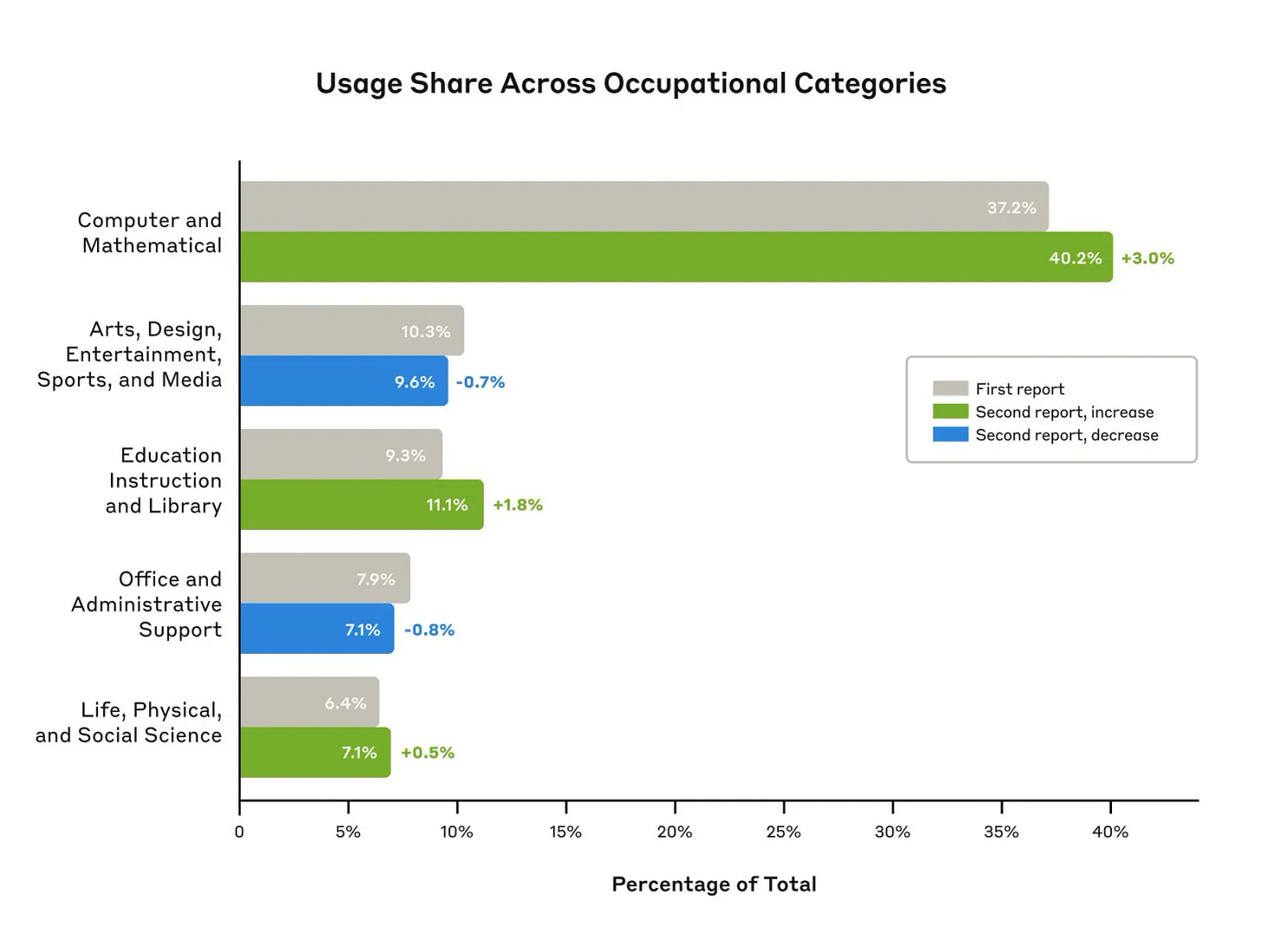🛋️ AI Therapy Cuts Depression 51%, 📈 OpenAI $300B Valuation, 🎬 Runway's Gen-4 Video
PLUS: AI Restores Voice for Paralysed Patient Musk, Musk Merges X + xAI + More
👋 This week in AI
🎵 Podcast
Don’t feel like reading? Listen to it instead.
📰 Latest news
Hollywood, Take Note: Runway's New AI Video Generator Arrives
^^^ Blew me away ^^^
Runway has launched Gen-4, a high-fidelity AI video generator.
It can maintain consistent characters, locations, and objects throughout scenes using visual references and simple instructions, without needing extra training.
Demonstrations showcase its ability to achieve this consistency and produce complex visual effects, including incorporating real-world items.
Why it Matters:
Gen-4's improved consistency and ease of use could make video creation more accessible. The ability to use reference images provides greater creative control.
Progress in AI video generation may lead to changes in how films and TV programmes are made. A study indicates that AI adoption is causing job losses in production, suggesting a potential reshaping of the industry.
Runway's ambitious financial targets reflect the growing commercial importance of AI video technology.
OpenAI’s Valuation Surges to $300 Billion as Academy and Subscriber Base Expand
OpenAI has experienced rapid growth, reaching 20 million paid subscribers and achieving a $5 billion annual revenue run rate, driven by premium ChatGPT subscriptions and viral adoption of GPT-4o’s image-generation capabilities.
Total weekly active users have now reached 500 million, recently adding one million users within an hour.
The company secured a record-breaking $40 billion funding round led by SoftBank, elevating its valuation to $300 billion despite continued operational losses.
Strategically, OpenAI launched "OpenAI Academy," a free educational platform offering practical courses and workshops on prompt engineering, multimodal AI, and real-world API integration.
Additionally, the company will soon release its first open-weight AI model since GPT-2, providing greater customisation and accessibility, alongside the $500 billion "Stargate" joint initiative to significantly expand global AI infrastructure.
Why it Matters:
OpenAI’s rapid subscriber and revenue growth underscores a broader industry shift, where AI success increasingly relies on distribution, user experience, and viral adoption rather than purely technical superiority.
The launch of OpenAI Academy illustrates a strategic move to foster widespread AI literacy, making practical AI skills accessible to a broader audience.
Releasing an open-weight AI model signifies a fundamental pivot towards greater transparency and decentralised development, potentially driving innovation by empowering developers with accessible and adaptable tools.
Coupled with significant infrastructure investments through the Stargate initiative, these developments position OpenAI not just as a technology leader, but as a central hub shaping the future AI ecosystem at scale.
AI Neuroprosthesis Restores Patient’s Own Voice Instantly from Brain Signals
^^^ Incredible to watch ^^^
Researchers at UC Berkeley and UCSF developed an AI neuroprosthesis that converts brain signals into spoken words in just one second, dramatically faster than previous systems with eight-second delays.
The AI decodes neural activity from the brain’s motor cortex, generating personalised speech in near real-time using patients' pre-injury voice samples.
It accurately produces even untrained words, demonstrating genuine understanding. This flexible approach supports multiple sensing methods, including invasive and non-invasive brain interfaces.
Why it Matters:
Reducing latency to near-instant speech marks a substantial improvement for patients experiencing speech loss due to ALS, stroke, or severe paralysis. The technology significantly enhances communication fluidity and patient autonomy, potentially shifting how neuroprostheses are integrated into daily life. Broader adoption could reshape expectations for accessible and naturalistic speech recovery in medical applications and everyday interactions.
📝 Research paper by Berkeley Engineering
51% Drop in Depression Symptoms: AI Therapy Matches In-Person Care
Therabot, an AI-powered therapy chatbot developed at Dartmouth, matched the outcomes of traditional outpatient cognitive therapy in a first-of-its-kind clinical trial.
Among 106 participants with depression, anxiety, or eating disorders, the chatbot reduced depression symptoms by 51% and anxiety by 31% over an 8-week period.
Users engaged with Therabot for an average of six hours—the equivalent of eight therapy sessions—and reported strong trust and connection with the system. Most were not receiving other treatment.
Therabot operated via smartphone, offered real-time personalised dialogue, and included safety protocols for crisis detection.
Why it Matters:
A shift towards accessible, trusted mental health care through generative AI could expand support to underserved populations.
Therabot’s performance suggests users may engage meaningfully with AI therapy, even forming bonds comparable to human interaction. Its around-the-clock availability and ability to respond in high-need moments—like late at night—make it key for consumer adoption in real-world settings.
These results underscore how well-designed AI can supplement traditional care at scale, potentially reducing gaps where clinician availability falls short.
📝 Dartmouth paper announcement
Elon Musk Merges xAI and X, Creating $100B AI-Powered Social Platform
Elon Musk’s AI startup, xAI, has acquired social media platform X (formerly Twitter) in an all-stock deal, forming a new entity named xAI Holdings valued at over $100 billion.
The merger integrates xAI's advanced artificial intelligence technologies, including the Grok chatbot, with X's extensive real-time user data from over 600 million active users.
The combined company aims to enhance user experiences through deeply embedded AI functionalities, aligning with Musk’s broader vision of transforming X into a unified "everything app" offering social interactions, payments, commerce, and AI-driven services.
Why it Matters:
This merger accelerates the integration of real-time artificial intelligence into everyday digital interactions, potentially reshaping user experiences across social media platforms. A shift towards deeply embedded AI means users could increasingly rely on intelligent assistants for personalised content, transactions, and communications directly within a single app. Vertical integration positions Musk's companies uniquely, allowing seamless AI training on live user-generated data, driving faster innovation cycles.
Amazon’s Nova Act Sets New Standard for Autonomous Web Agents
Amazon has released Nova Act, an AI-powered SDK enabling developers to build agents that reliably automate web-based tasks.
Nova Act focuses on accuracy (over 90% on UI interactions), outperforming competitors in benchmarks like ScreenSpot Web (text: 0.939, icons: 0.879).
Key features include secure browser control via Playwright, structured data extraction, detailed workflow management, and Python integration.
Nova Act is currently in a free research preview under an open-source Apache 2.0 licence but is limited to Amazon’s proprietary Nova model.
Why it Matters:
Nova Act addresses the reliability gap in existing AI agents, making practical web automation viable for businesses and developers. Its emphasis on secure, precise web interactions could shift consumer and business workflows towards greater automation, reducing manual oversight. By setting a higher standard for reliable web-task automation, Nova Act positions Amazon competitively in the growing AI agent market.
📝 Announcement page for Nova Act
57% of AI Use Still Augments Rather Than Automates Work
Research from Anthropic reveals that Claude 3.7 Sonnet is seeing expanded use across technical, educational, and scientific domains, driven in part by its new “extended thinking” mode.
This feature, used in ~10% of research tasks and ~8% of software development tasks, allows the model to handle more complex queries. Coding saw the largest increase in usage share (+3%), while augmentation remains the primary interaction mode across all occupations (57%). Learning-focused conversations grew from 23% to 28%.
Anthropic also released a new 630-category bottom-up taxonomy of real-world tasks, offering a granular view into how users apply Claude in contexts from plumbing guidance to battery technology.
Why it Matters:
A shift towards technical and knowledge-heavy applications suggests AI models are being integrated into skilled workflows, especially where deeper reasoning is required.
Claude’s blend of automation and co-creation—evident in high task iteration among copywriters and high directive use among translators—shows how users tailor model use by task type.
With augmentation still dominant, the model is functioning as a collaborator rather than a replacement.
The release of detailed, open datasets also enhances transparency, enabling researchers to track how AI fits into evolving work patterns across sectors.






